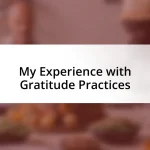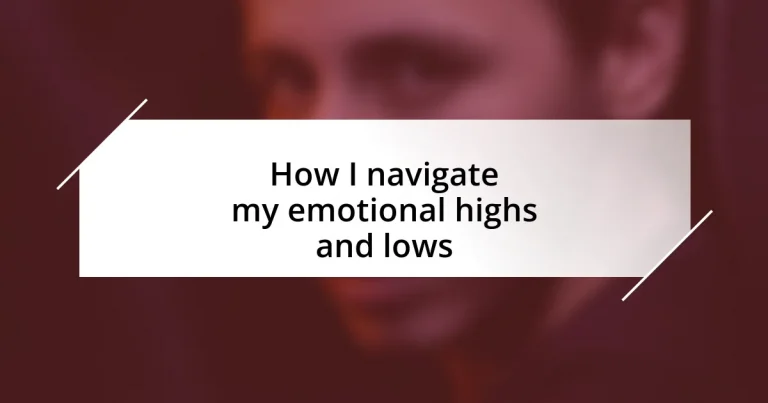Key takeaways:
- Understanding emotional dynamics involves recognizing that highs of joy can be followed by lows, emphasizing the need for emotional awareness.
- Identifying emotional triggers, such as stressful environments and specific relationships, is crucial for managing reactions and emotional responses.
- Developing coping strategies like journaling, mindfulness, and building a support network enhances resilience and emotional management.
- Creating a balanced routine, including intentional time for self-care and small rituals, helps maintain emotional stability amidst daily challenges.
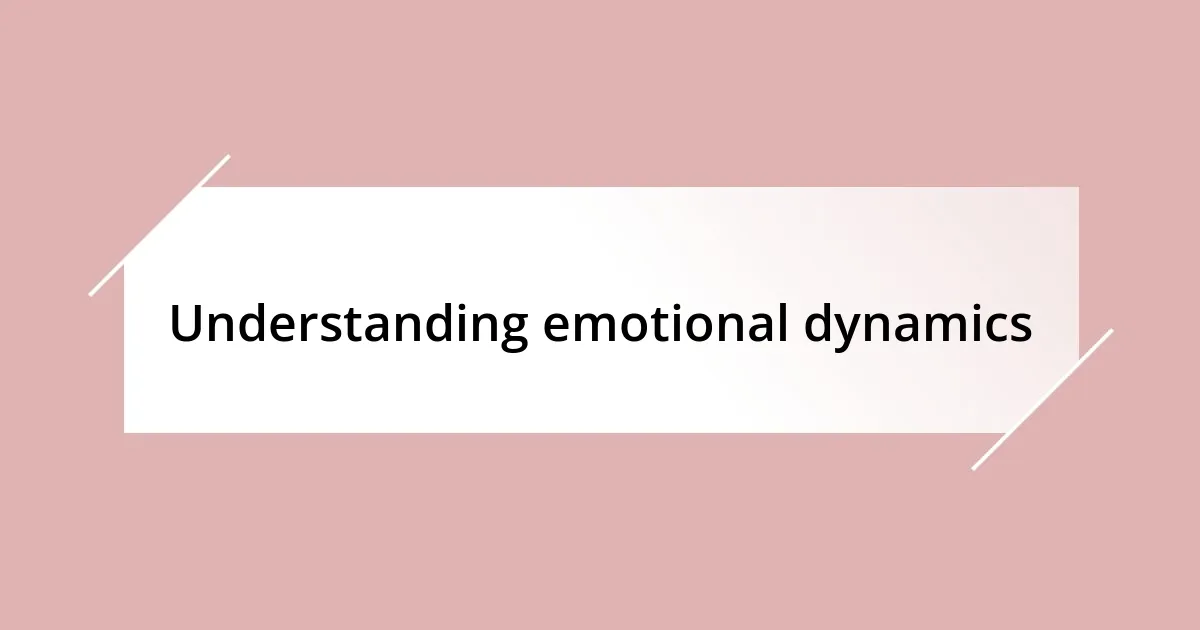
Understanding emotional dynamics
Understanding emotional dynamics is like navigating a complex landscape, where peaks of joy and valleys of sorrow are intertwined. I remember a time when I was riding high after a career achievement, only to feel an unexpected dip in mood a few days later. It made me question—why could something so fulfilling bring about such contrasting feelings so soon after?
Our emotions often reflect our experiences, and understanding this ebb and flow can provide clarity. I’ve noticed that times of happiness can also set me up for a kind of emotional hangover. Have you ever felt that rush of joy followed by a sudden sense of emptiness? It’s crucial to recognize that highs can often be followed by lows, a natural balance that our emotional health demands.
The dynamics of our feelings aren’t just random; they respond to the world around us. For instance, during particularly stressful weeks, even minor disappointments feel magnified. It pushes me to ask—how aware am I of these shifts, and how do they affect my day-to-day life? Embracing the full spectrum of emotions allows us to navigate our highs and lows with greater awareness and resilience.
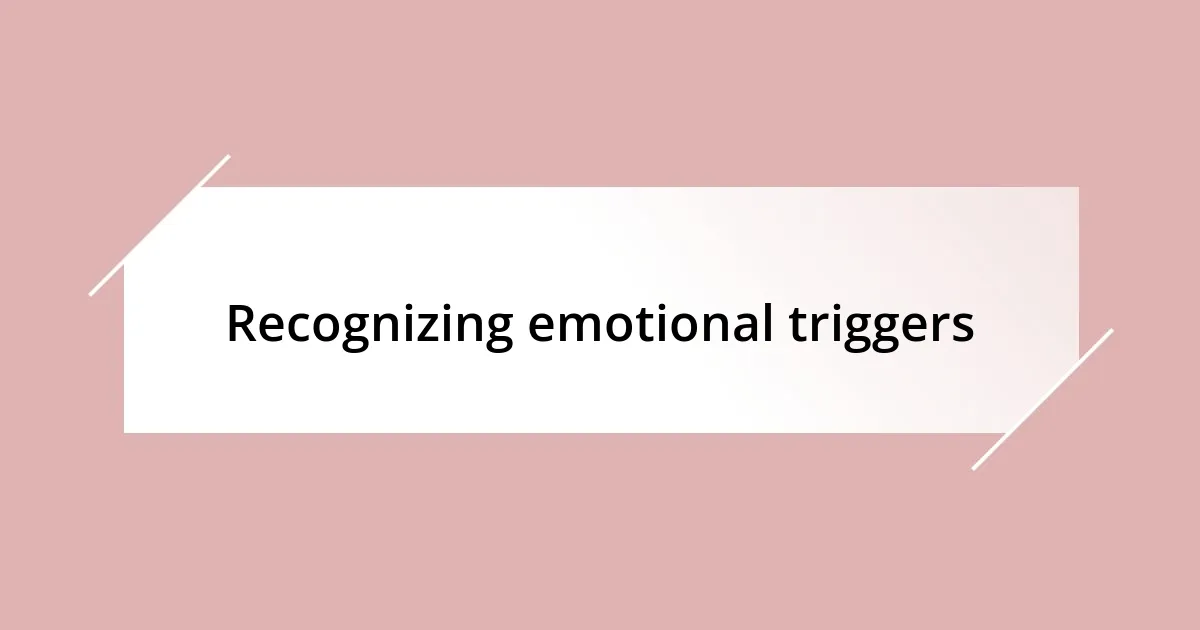
Recognizing emotional triggers
Recognizing emotional triggers is essential for managing my emotional landscape. I often find that specific situations or interactions can ignite strong feelings. For example, a casual comment from a colleague that evokes memories of past failures can send me spiraling. Identifying these triggers allows me to prepare and respond rather than react impulsively.
Here are some common triggers I’ve learned to recognize:
– Stressful work environments: Pressure can lead to feelings of inadequacy.
– Certain relationships: Interactions that remind me of unresolved conflicts may heighten my emotional response.
– Holidays or significant dates: These moments often resurface old emotions that I thought I had processed.
– Media consumption: Watching certain shows or reading articles can amplify feelings related to personal experiences.
– Physical states: Lack of sleep or poor nutrition can make me more susceptible to emotional volatility.
By staying aware of these triggers, I empower myself to navigate my emotional highs and lows with more grace.
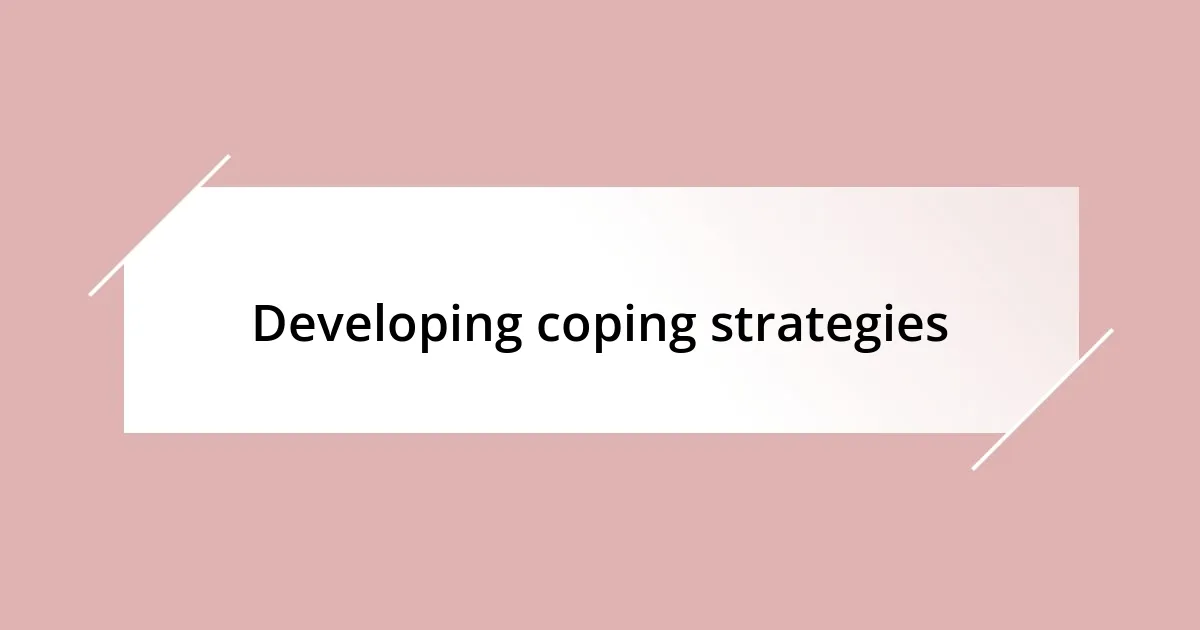
Developing coping strategies
Developing effective coping strategies has been a game changer for me in managing emotional highs and lows. When I feel overwhelmed, I often lean on journaling as an outlet. Writing my thoughts down helps release emotional tension and provides clarity—I can reflect on my feelings without judgment. Have you tried writing as a way to process emotions? For me, it becomes a safe space to explore and understand my internal landscape.
One key strategy I’ve found particularly helpful is practicing mindfulness. Whenever I experience an emotional surge, I take a moment to breathe deeply and ground myself. This practice not only calms my mind but also allows me to observe my feelings without being consumed by them. I usually visualize my thoughts as clouds floating by, reminding me that emotions are temporary. This visualization helps distill the intensity of the moment, fostering a sense of peace amidst emotional chaos.
Additionally, building a support system can’t be overlooked. When I’m feeling low, having friends or family to connect with makes a significant difference. I remember a time when I reached out to a close friend during a challenging week, and just sharing my feelings lifted a heavy burden off my shoulders. It’s reassuring to know that we’re not alone in this emotional journey, and sometimes, simply talking it out is an effective coping mechanism.
| Coping Strategy | Description |
|---|---|
| Journaling | Writing down emotions to release tension and gain clarity. |
| Mindfulness | Breathing and grounding techniques to observe emotions without attachment. |
| Support System | Connecting with friends or family for emotional sharing and support. |
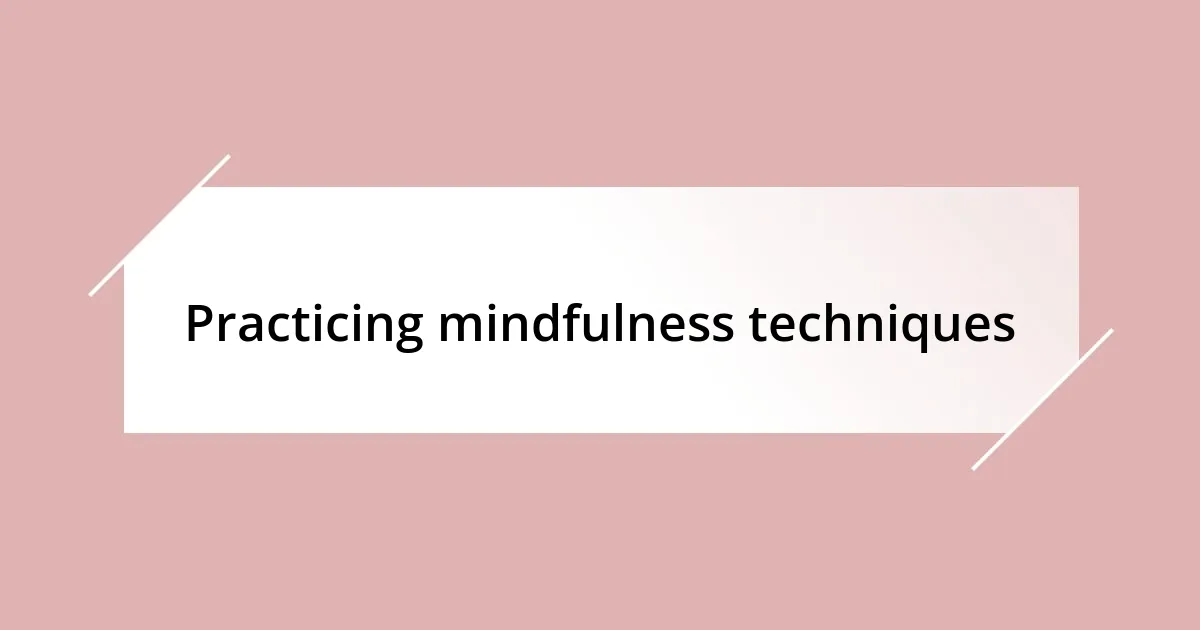
Practicing mindfulness techniques
Mindfulness techniques have become a cornerstone of my emotional management toolkit. Whenever I feel like my emotions are spiraling out of control, I pause to practice deep breathing. It’s remarkable how just a few minutes of focused breathing can create a ripple effect of calmness. I often visualize inhaling positivity and exhaling negativity, and it feels like I’m actively making space in my mind. Have you ever tried something similar? It’s like pressing the reset button on my emotional state.
One of my favorite mindfulness exercises is the “5-4-3-2-1” grounding technique. I remember the first time I used it during a particularly stressful day at work. I looked around and identified five things I could see, four I could touch, three I could hear, two I could smell, and one I could taste. This little exercise not only anchored me in the present moment but also reminded me that there’s more to my surroundings beyond my racing thoughts. It’s a simple yet effective way to break the cycle of anxiety—almost a mini-vacation for my mind!
Incorporating mindfulness in my daily routine has transformed the way I experience emotions. For instance, on mornings when I wake up feeling anxious, I dedicate a few moments to mindfulness meditation. It’s not about stopping thoughts but rather observing them. I remember feeling overwhelmed by a tide of worries before I made this a regular practice. Now, instead of drowning in my emotions, I acknowledge them and allow them to flow through me. Isn’t it fascinating how something so simple can provide such profound clarity? This approach has helped me cultivate a sense of emotional resilience that I carry throughout the day.
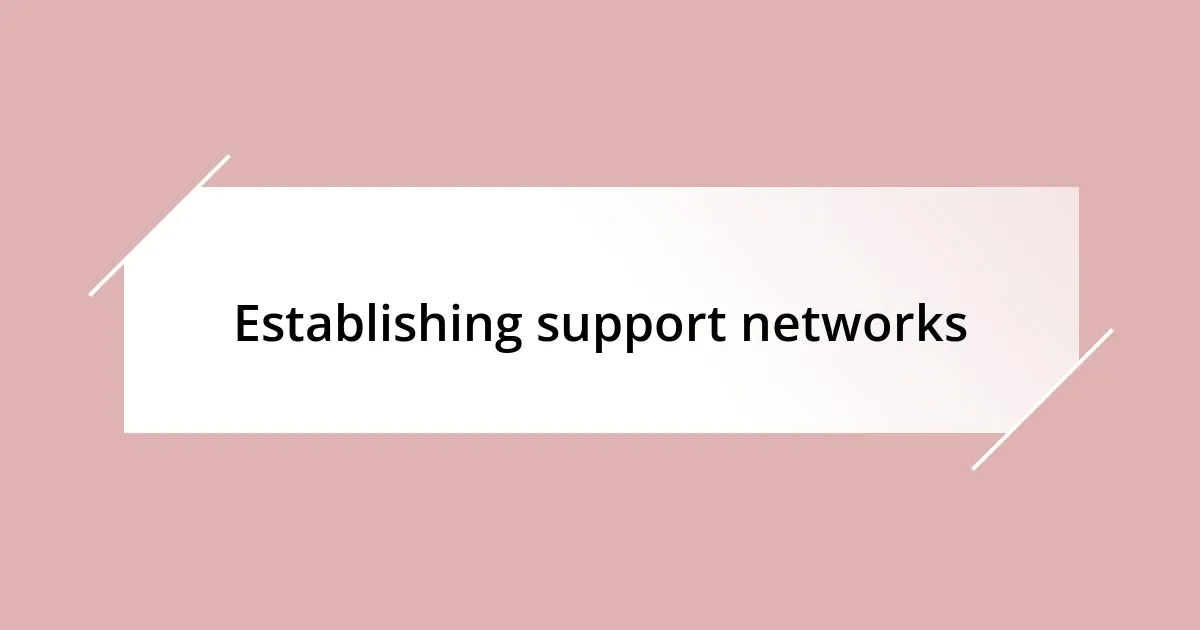
Establishing support networks
Establishing a solid support network has been a crucial part of how I navigate my emotional landscape. I’ve found that surrounding myself with understanding and empathetic individuals gives me the reassurance of community. There were days I felt isolated, but reaching out to friends and family reminded me that vulnerability can be a source of strength. Have you considered who might be in your own support circle?
One particular experience stands out in my mind. I was navigating a difficult period of uncertainty and reached out to a group of friends from college. We scheduled a regular call, and just hearing their laughter and stories helped lift my spirits. It’s incredible what a little shared positivity can do for your emotional state. It made me realize that sometimes, mere presence—whether virtual or in-person—can create a lifeline in tough times.
Finding the right type of support is key for me; I’ve learned that not everyone responds in the same way. There are some friends who are great listeners, while others offer practical advice when it’s needed. I tend to rely on those who remind me of my strengths, who help me shift focus away from worry. Asking myself, “What do I need in this moment?” has helped me tailor my outreach. Isn’t it comforting to know that with the right connections, we can navigate our emotional highs and lows together?
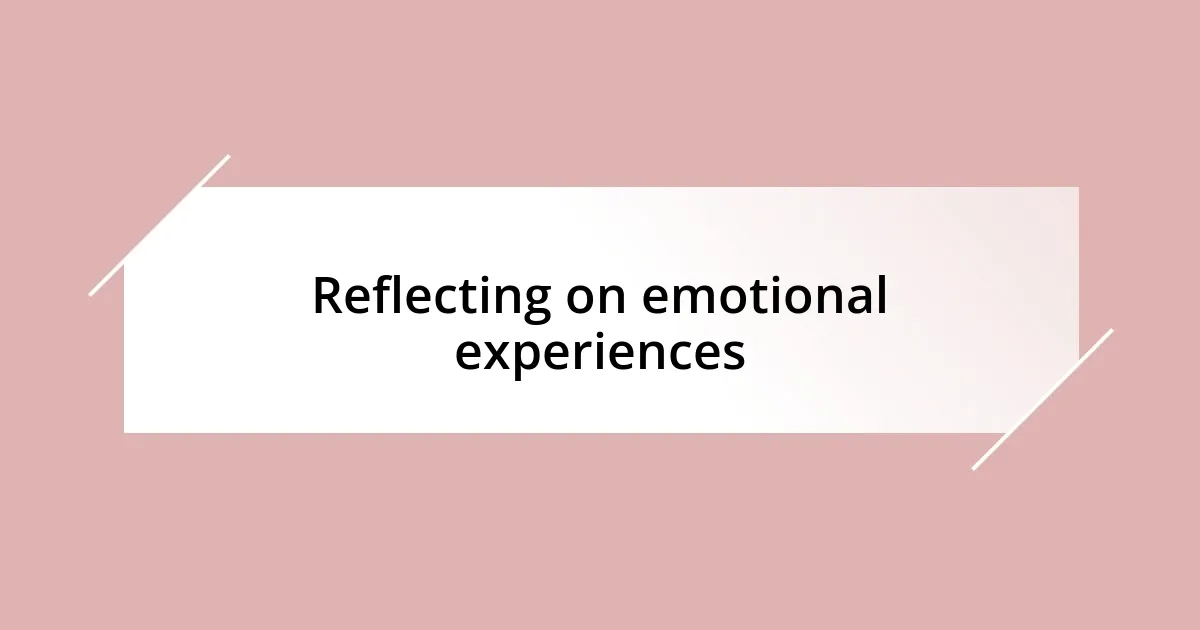
Reflecting on emotional experiences
Reflecting on emotional experiences has been a transformative practice for me. I remember a time when I faced a significant setback at work. After giving myself some time, I sat down with a journal and poured my thoughts onto the pages. That act of writing became a mirror, reflecting both my frustrations and lessons learned. Have you ever tried writing about your emotions? It can help unravel the complex web of feelings swirling in your mind.
In another instance, I took a long walk after feeling overwhelmed by a personal situation. As I strolled, I allowed my thoughts to flow freely. It’s interesting how movement can shift my emotional landscape. Suddenly, I found clarity in my struggles, realizing that each high and low has shaped who I am. This simple act of reflection enabled me to embrace the entirety of my emotional journey.
Through these experiences, I’ve learned that reflecting on emotions isn’t solely about analyzing past events; it’s also about acknowledging how they impact my present. I often ask myself, “What can I learn from this feeling?” Engaging with my emotions in this way has cultivated a deeper understanding of myself. Isn’t it enlightening to discover how our emotions can guide us toward personal growth? I truly believe that reflection fosters resilience, allowing me to navigate emotional highs and lows more effectively.
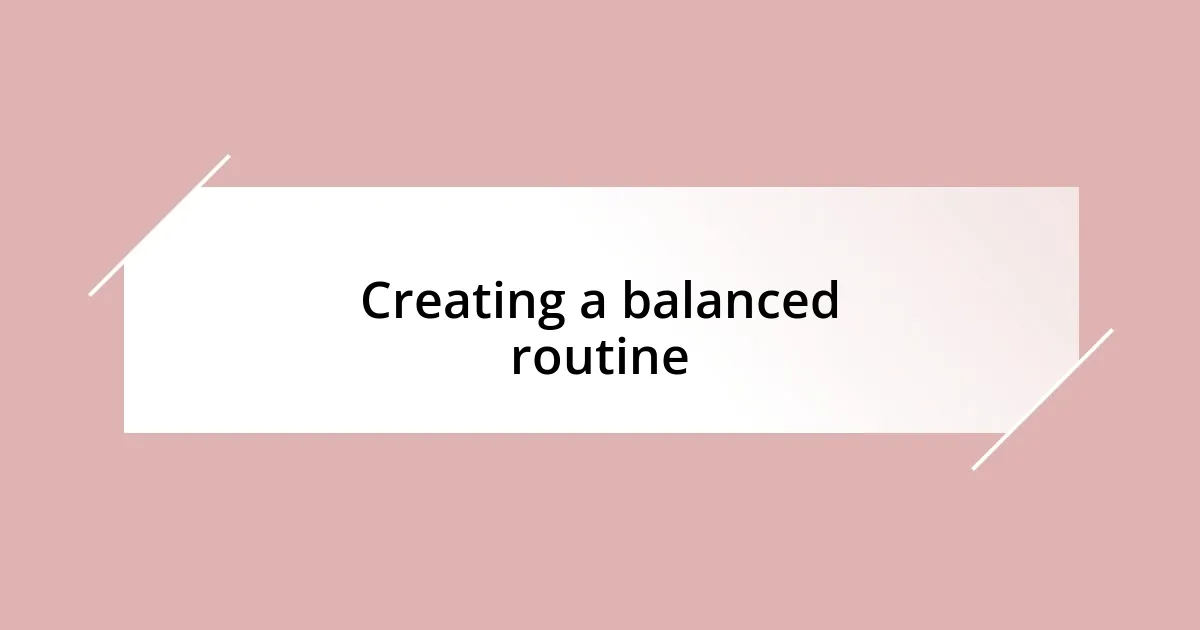
Creating a balanced routine
Creating a balanced routine has played a pivotal role in how I manage my emotional highs and lows. I once realized that my days were becoming chaotic, jumping from one task to another, leaving me feeling drained. So, I began to structure my time more intentionally, blending work, self-care, and social connections. Doesn’t it feel rejuvenating when we know what to expect from our day?
One significant change I made was setting specific hours for different activities. Mornings became my sacred time for exercise and mindfulness, while afternoons were dedicated to work. I discovered that starting the day with movement elevated my mood and focused my mind. It really makes a difference to know that I am prioritizing my well-being before diving into daily pressures, doesn’t it?
I also found value in creating tiny rituals throughout my day, such as savoring a cup of tea as a midday break. These moments of pause allow me to reset emotionally. They serve as gentle reminders to check in with myself. Have you explored your own small rituals? Even a few moments of intentionality can disrupt the emotional rollercoaster, anchoring me back to balance amidst life’s ups and downs.









